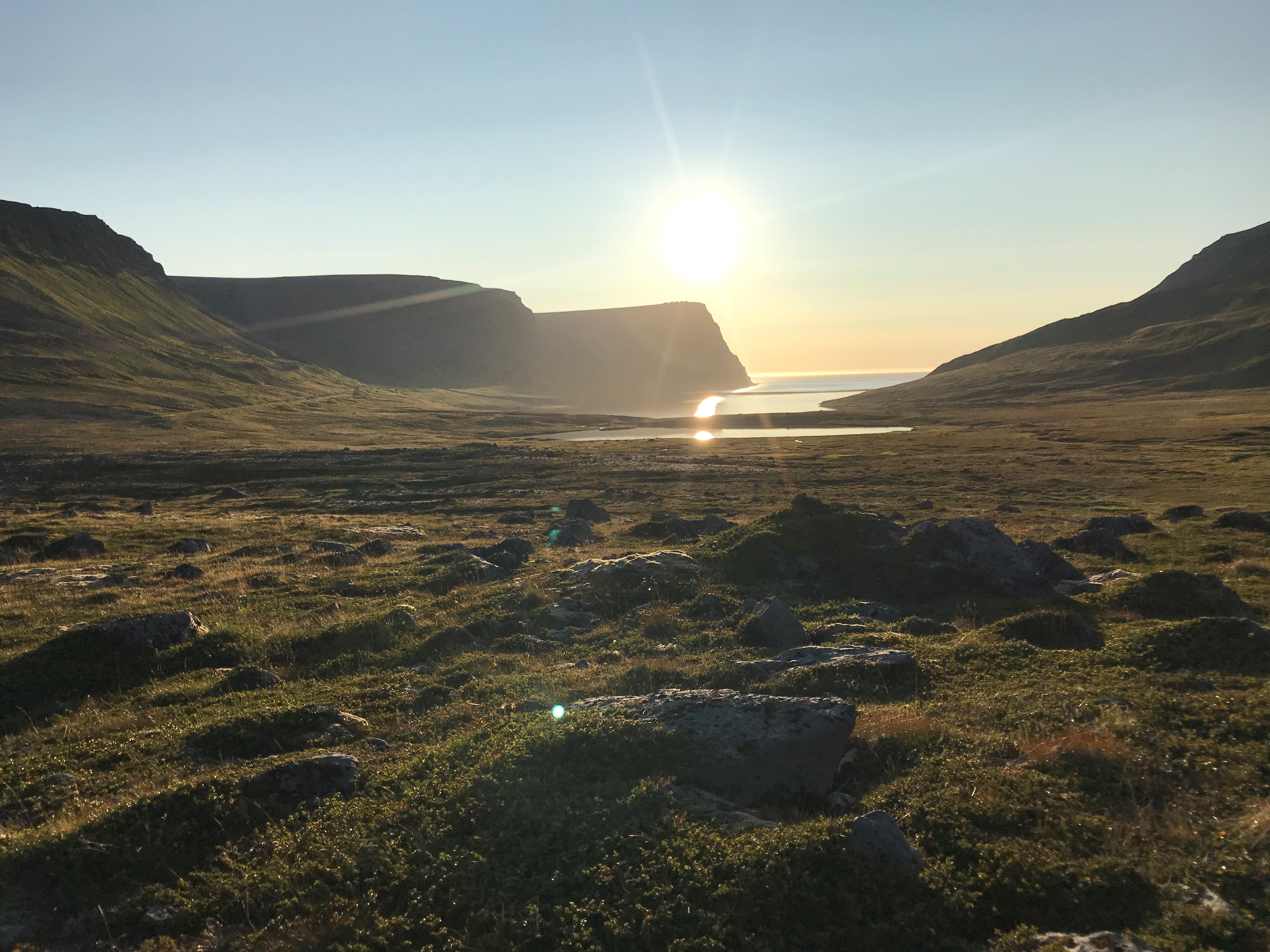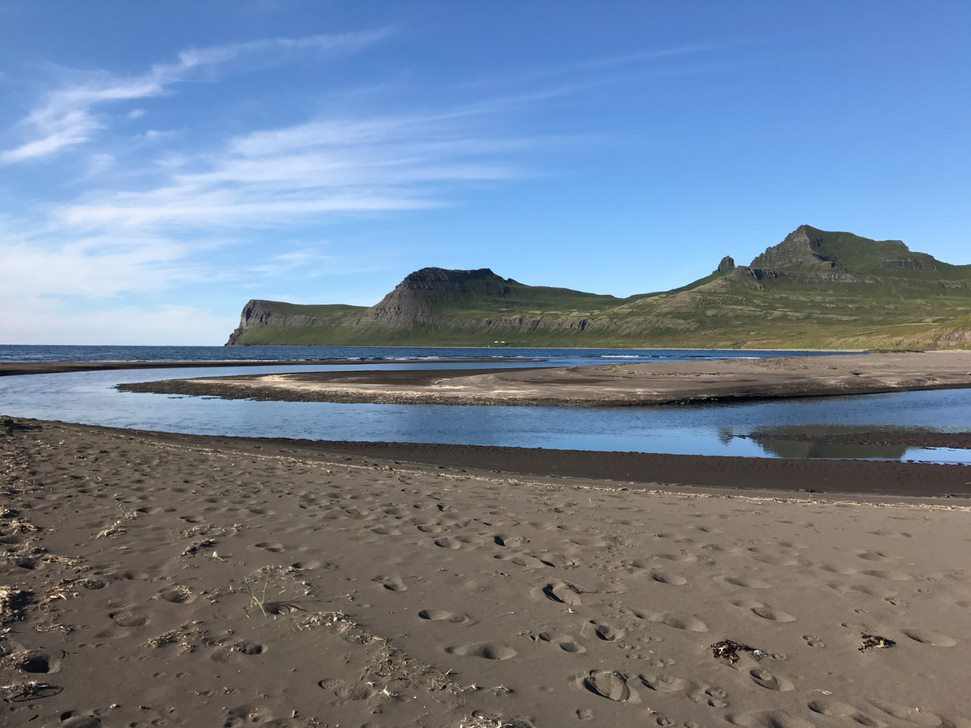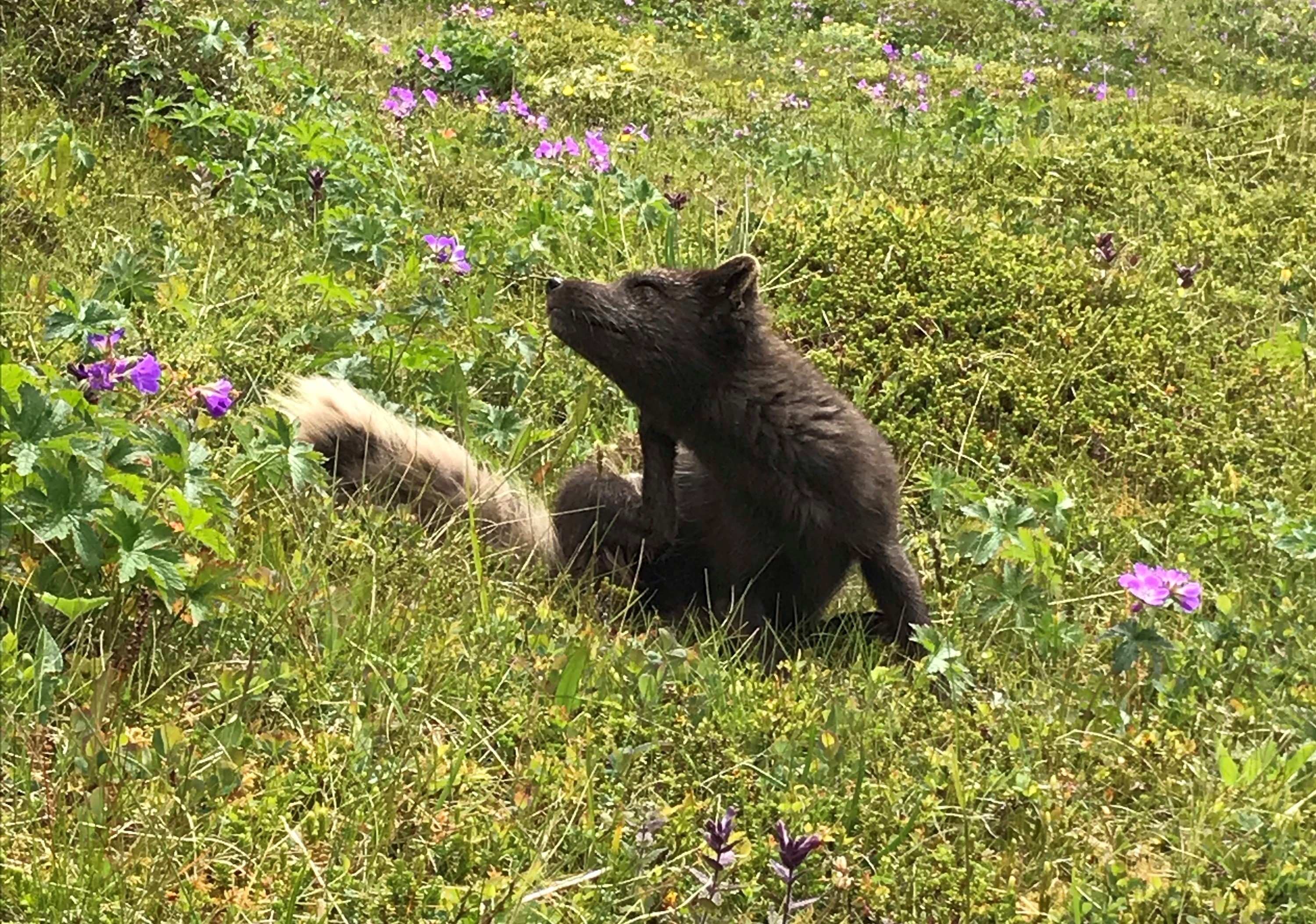Vinna við nýjar heimasíður Umhverfis- og orkustofnunar og Náttúruverndarstofnunar er í gangi. Heimasíða Umhverfisstofnunar er virk á meðan vinnunni stendur. Information in English
Why is the area protected?

The Hornstrandir region was declared a protected area in 1975. It consists of Hornstrandir itself, Aðalvík, Rekavík bak, Látur og Fljótavík plus a part of Jökulfirðir. The protected area is 589 square kilometres in size and located in the northern part of the Westfjord Peninsula. One of the main characteristics is its remoteness and how little it has been influenced by human structures and traffic. The area contains gigantic bird cliffs, unique flora and cultural remnants that serve as monuments to an earlier era when people still lived there.
The objective of protection is to preserve the wildlife, geology and cultural remnants of the area. The conservation of the area is of great importance, both in Icelandic as well as international terms, since it is an important habitat for a large number of bird species as well as being one of the most important homes for foxes in Europe.
.jpg)
Jökulfirðir are surrounded by mountains, and there it can well be seen how the area was built up by a series of volcanic eruptions where lava layers are visible with sediment layers in between. Numerous rock dykes cut through the lava layer stacks and create magnificent peaks and ridges. Surf ridges are frequent in Hornstrandir, whereas in Jökulfirðir signs of glacial rifts are prevalent.
The flora of Hornstrandir is unique, because the weather is similar to the Arctic and there has been no grazing there for more than half a century. Snow is often heavy and protects the vegetation against frost in winter. The water released through melting keeps the soil moist all summer. This means that conditions for various plants are favorable and large flower areas can be found in the region. The flora has a very large number of varieties; more than 260 species of vascular plants are found within the nature preserve. Continuous vegetation only reaches and altitude of 300-400 metres. The small mountain plants such as the mountain buttercup are common as well as tall fields of roseroot, angelica and geraniums. Sea pea and sea lungwort are common on the coast.

There are seven internationally important bird areas in the area, all with sea birds: Grænahlíð, Ritur, Kögur, Kjalarárnúpur, Hælavíkurbjarg, Hornbjarg and Smiðjuvíkurbjarg. There are also large numbers of eider duck and other duck species. Hornstrandir is an important moulting area for duck species, and a part of the area is the winter home for the harlequin duck. Other species include the sandpiper, the snow bunting and the meadow pipit. Sea eagles, falcons and merlins also nest in the area. There are few lakes and lake birds are therefore rare, although red-throated loons, mallards, swans and phalarope can be found.
Amongst mammals, the fox is most common and is totally protected. The Arctic fox is registered in Appendix II of the Bern Convention and is totally protected in Europe. The nature preserve is one of the most important sanctuaries for foxes in Europe.
A large number of tourists visits the Hornstrandir area to see and photograph the Arctic fox, both in winter and summer. Research has been conducted on the fox, its life and the impact of tourists on its behaviour and survival. It has been shown that tourism can at times have an adverse effect on the fox.

Rules on observing the fox have been laid down to reduce the strain on the fox population. They can be found here.
Amongst other mammals in the area there is the field mouse, and seals can be found on the beach, both harbour seals and grey seals.
The last resident in the area left in 1952, from Hesteyri. There was a lighthouse warden at the Hornbjarg light house until 1995 and since then no one has lived in the area. The houses still remaining were mostly built in the first decades of the 20th century. The Staðarkirkja (church) in Aðalvík and the prayer house in Furufjörður are both under protection. There are military remnants in Aðalvík and the remnants of several houses can also be found there. Paths in the area were the main means of communication at the time the area was inhabited. The paths are mostly well-marked with cairns which also have been placed under protection.